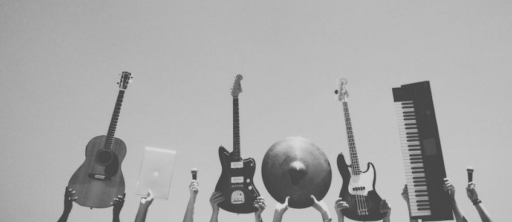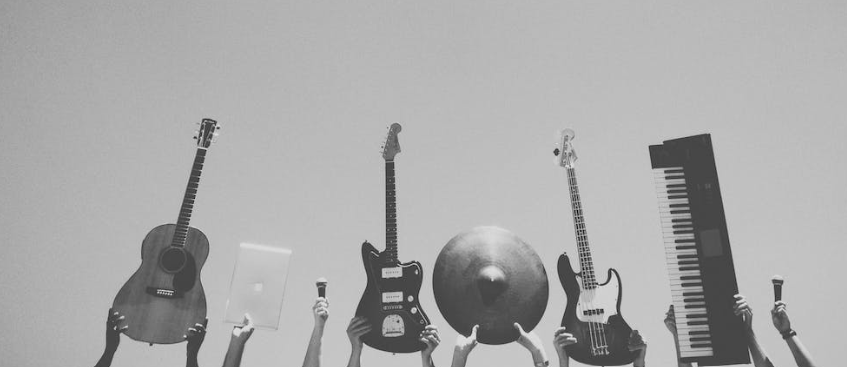Ready to rock?
Choosing the right musical instrument is a pivotal decision that significantly influences your musical journey. This guide is designed to offer valuable insights and considerations to assist you in choosing the right instruments available. It encourages thoughtful reflection on factors such as personal preferences, musical genres of interest, and practical considerations like size, weight, and maintenance. By thinking into these aspects, aspiring musicians can make informed decisions, ensuring that the instrument they select aligns harmoniously with their individual tastes and goals, enhancing their overall musical experience. Moreover, understanding the unique characteristics of each instrument and their compatibility with different musical styles is essential. Whether you are drawn to the rich tones of a string instrument, the versatility of a keyboard, or the rhythmic beats of percussion, this guide explores how various instruments contribute to different genres and musical expressions.
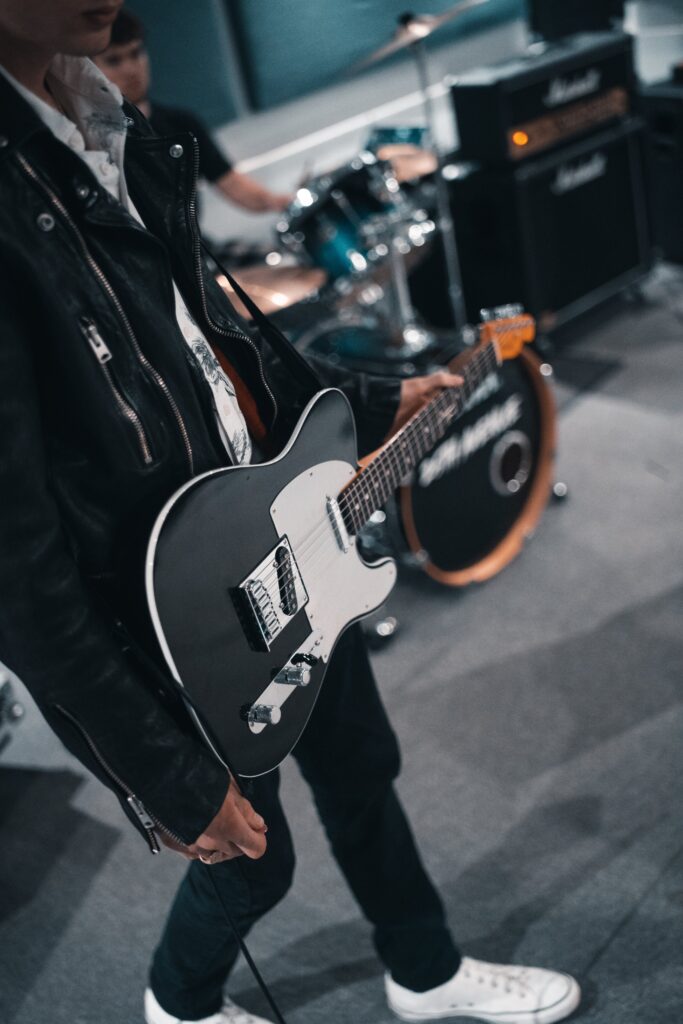
Additionally, it emphasizes the importance of hands-on experience, encouraging potential musicians to try out instruments before making a final decision. By taking the time to explore the sonic possibilities and physical demands of each instrument, individuals can make a well-informed choice that resonates with their musical aspirations, setting the stage for a fulfilling and rewarding musical journey.
So, let’s go to the tips!
1. String Symphony
When you pluck a stretched string, it feels like a mini-vibration running through you. That’s what the String Symphony is about. It includes instruments like the violin, cello, and harp. Musicians use them to make tunes as gentle as spider silk or as strong as a knight shouting in a battle. It’s not just about making sounds; it’s about making feelings you can really feel. The String Symphony is like a musical adventure, where every pluck and strum tells a story that’s full of colors and magic. So, if you want to explore the amazing world of music, these strings are your ticket.
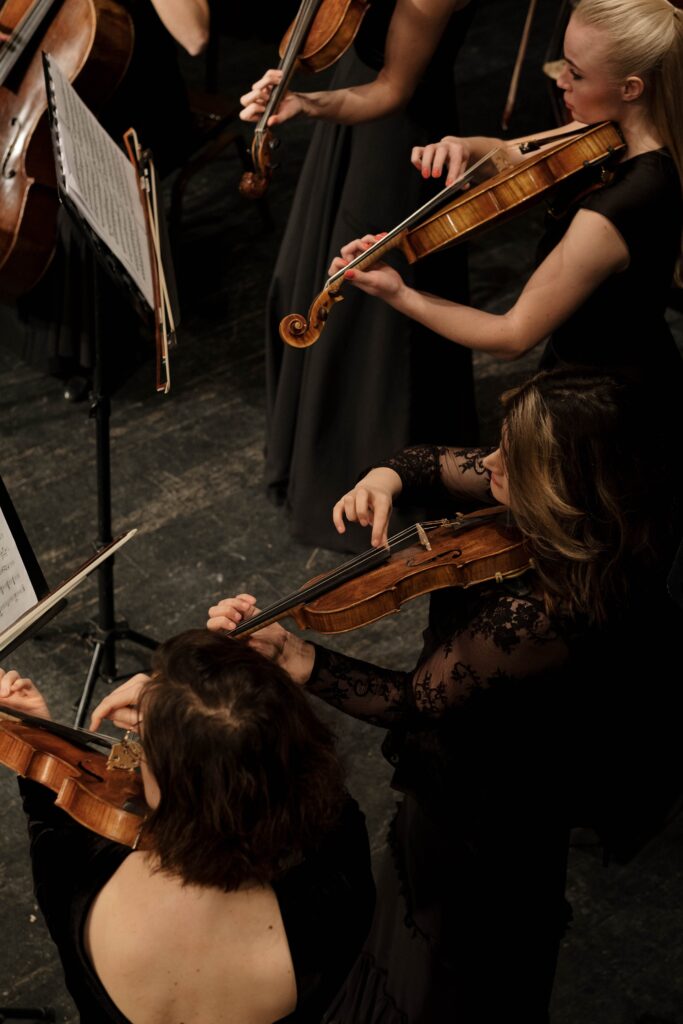
The Bowing Brigade
Violins, violas, cellos, and double basses—these maestros use a bow to draw across the strings, creating a sustained and expressive sound. Classical music thrives with violin concertos, while cellos often find a home in orchestral compositions and film scores. Violas contribute to chamber music, and double basses provide the foundational tones in orchestras.
The Plucking Posse
Let’s talk about guitars, lutes, harps, and ukuleles – these are all string instruments that make cool sounds. They use techniques like fingerpicking or strumming to create a rhythmic beat. Guitars are like musical superheroes because they can fit into lots of music styles like rock, pop, blues, and jazz. Lutes are like time machines, playing music from a long time ago. Harps make music that sounds like it belongs in fairy tales or Celtic stories. And ukuleles are like the happy friends of folk and Hawaiian music, making everything sound cheerful and fun.
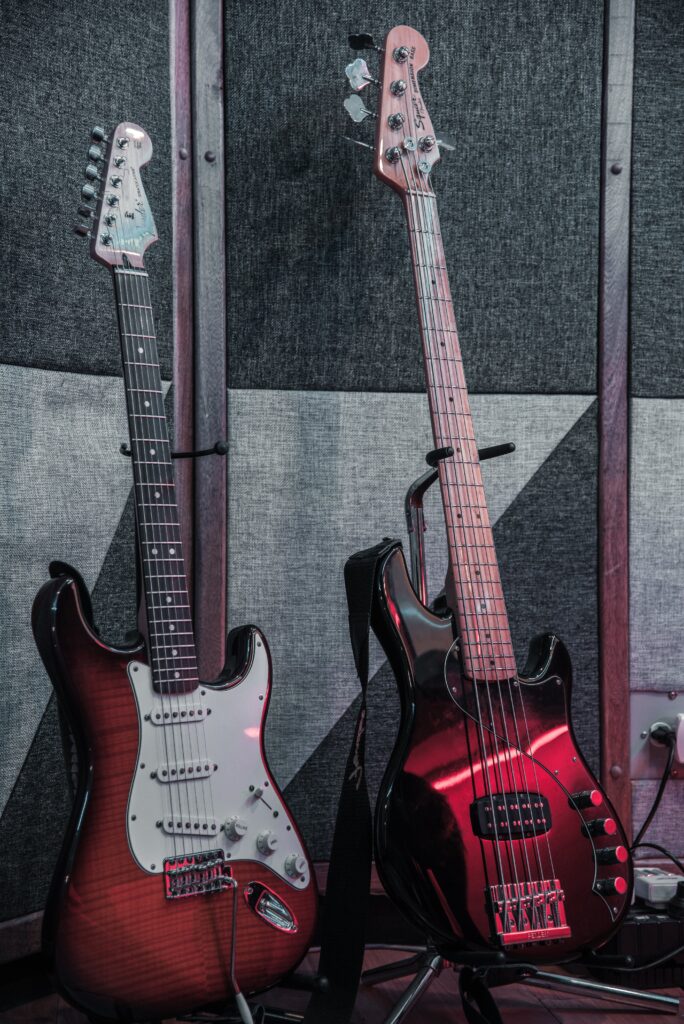
So, each of these instruments adds its own special touch to the world of music, making it colorful and interesting.
The Hammer Heroes
Meet the big players in the world of music: pianos and harpsichords. These are like the giants of the string family because they make awesome sounds by hitting strings with hammers. Imagine a waterfall of melodies and super loud chords – that’s what these instruments do! Pianos are like the main characters in classical music, jazz, and lots of other cool music styles today. They’re super versatile and can handle all kinds of tunes. Now, harpsichords are like the cool kids of Baroque music, adding a touch of class to dances and fancy compositions. So, whether you’re into the timeless classics or the latest hits, pianos and harpsichords bring their own magic to the musical party!

2. Wind Whisperers
Imagine closing your eyes and taking a deep breath. That’s the same air that brings music to life in the wind family. In this musical world, flutes, clarinets, and oboes are like the breath of fresh air that turns melodies into a swirling dance. Flutes create a crisp and airy sound by blowing across a hole, fluttering through classical, jazz, and folk tunes like graceful butterflies. Clarinets, with their reed mouthpiece, add a warm and versatile touch, making them favorites in orchestras and marching bands. And then there’s the oboe, another cool member of the wind family, adding its own unique flavor to the musical mix. So, next time you take a deep breath, think about the magical melodies these instruments create in the air.
The Wooden Wonders
Flutes, piccolos, clarinets, and oboes produce sound when the player blows air into the instrument. Flutes contribute to classical and folk music; clarinets add depth to orchestras and jazz ensembles; and oboes bring a unique timbre to classical compositions.
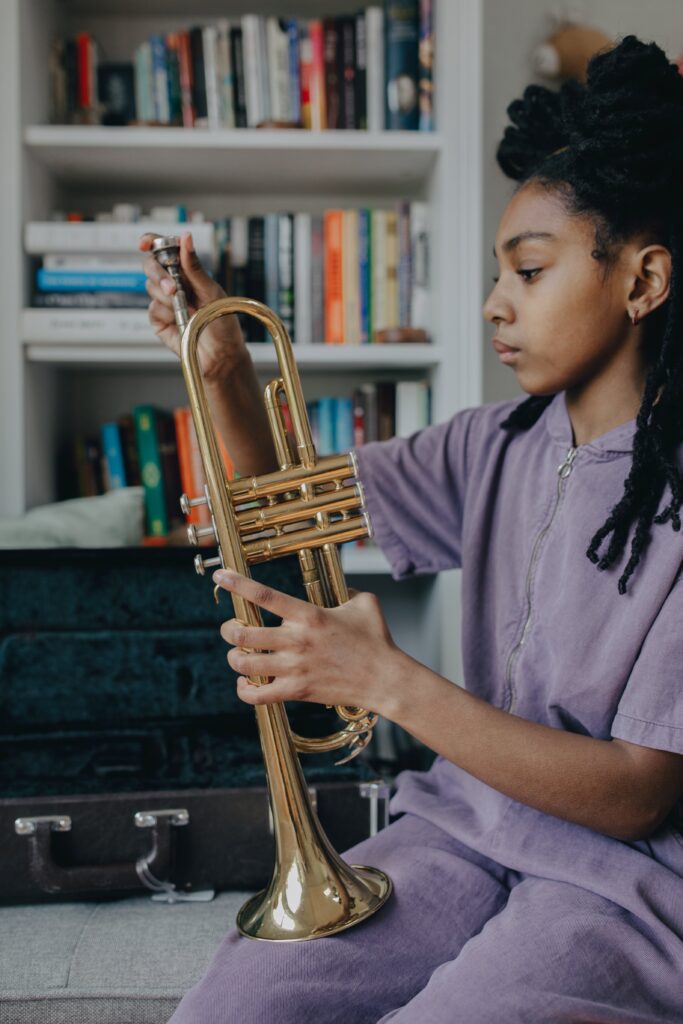
The Brassy Bunch
Trumpets are made of shiny brass and when you blow into them, they make strong and clear sounds that can be heard from far away. They’re like the cheerleaders of the music world, adding a lot of excitement to the tunes. Whether it’s in a band, an orchestra, or even at a parade, trumpets bring that extra sparkle to the musical party!
The Reed Royalty
Explore the world of Saxophones and Bassoons – they’re like the cool VIPs in the music club. These instruments have special reeds that wiggle when you play them with your lips, creating all sorts of awesome sounds. Saxophones are the big shots in jazz music, giving it that smooth and groovy vibe. Meanwhile, Bassoons are like the playful characters in cartoons, adding a fun and quirky touch to the music. So, whether it’s a jazzy jam or a playful cartoon soundtrack, Saxophones and Bassoons bring their own special flair to the musical party, making it an exclusive and exciting experience for your ears!
- Percussion Powerhouse:
Do you feel the earth tremble beneath your feet? That’s the percussion family, where drums, cymbals, and chimes unleash primal rhythms that pound through your soul. Percussion instruments provide the primal rhythms in tribal dances and the powerful beats in rock anthems, creating a foundation that resonates through diverse musical landscapes.
The Skin Strikers
Drums, timpani, and congas – they’re the Skin Strikers. These instruments, made with tight animal skins, meet sticks that make booming beats, playful paradiddles, and loud crescendos. You often hear them in tribal dances, bringing ancient rhythms to life, or in rock anthems, where they take the main stage, making the music intense and energetic. With every hit, they create a strong foundation for all kinds of music, from old traditions to the rocking tunes of today. The Skin Strikers are like the heartbeat of music, making it lively and exciting!
The Metal Mayhem
Cymbals, bells, and gongs – they’re the Metal Mayhem. These instruments, made of clashing metal, give you shivers with their shimmering accents, crashing explosions, and haunting echoes. You often find them in epic movie scores, creating dramatic soundscapes, or in the hypnotic pulse of Indian music, adding a magical touch.
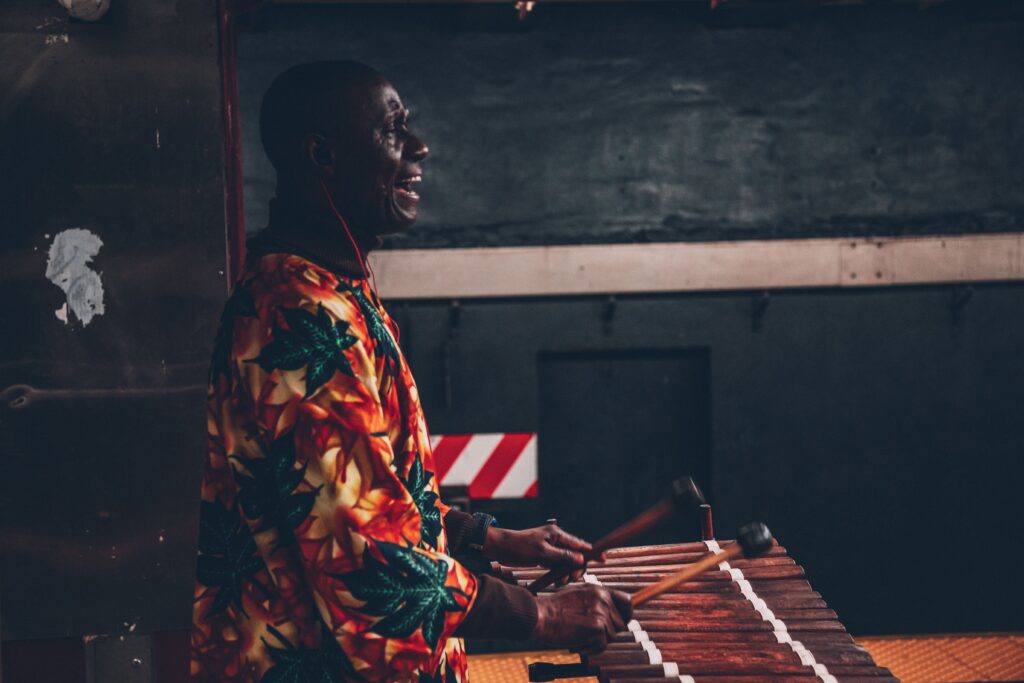
The Melodic Mallet Masters
Xylophones, vibraphones, and marimbas—these wooden bars, caressed by mallets, produce melodic and intricate patterns. Think of classical concertos or the playful tinkling of music boxes.
The Rhythmic Rebels
In the lively tapestry of percussion, bongos, tambourines, and djembes stand out as the vibrant Rhythmic Rebels. These hand-played wonders, with their spirited beats, bring a burst of energy, adding a rhythmic spice that elevates the entire musical mix. Crafted to be played by nimble hands, bongos deliver lively Latin beats, creating an infectious rhythm that makes you want to move. Tambourines, with their jingling jangles, add a playful touch to folk tunes, infusing them with a lively and dynamic spirit that resonates with joy. Djembes, with their deep tones and rich textures, contribute a primal essence, transporting listeners to the heart of rhythmic traditions. Together, the Rhythmic Rebels create an ensemble that’s not just heard but felt, injecting life and vitality into the percussion family across a spectrum of musical genres. Whether in the lively dance of Latin rhythms or the spirited tunes of folk music, these hand-played wonders bring a unique and dynamic flavor, making them the heartbeat of percussion’s rhythmic rebellion
4. The Keyboard Kings and Queens:
Touch a key and unlock a universe of sound with the keyboard family, where pianos, organs, and harpsichords reign supreme.
The Ivory Emperors
Pianos—their black and white keys command a vast sonic palette, from delicate whispers to thunderous chords. Pianos are central to classical compositions, as exemplified in Chopin’s emotive nocturnes and Beethoven’s powerful symphonies. They also play a pivotal role in jazz, pop, and various contemporary genres, showcasing their adaptability.
The Pipe Powerhouses
Organs are remarkable instruments, have a presence that transcends genres, taking a prominent role in classical and sacred music while seamlessly weaving their enchanting notes into the fabric of jazz and blues. In sacred spaces, organs become storytellers, narrating sacred hymns with their powerful and resonant tones that echo through towering cathedrals, creating an atmosphere of reverence and spirituality. Yet, their versatility extends far beyond the sacred, finding a home in concert halls where they unleash dramatic themes that evoke a range of emotions. Organs, with their commanding presence and ability to produce a wide sonic spectrum, contribute to the rich tapestry of musical expression. From the majestic swells that accompany grand processions to the soulful strains that accompany bluesy improvisations, organs stand as versatile maestros in the orchestra of musical diversity.
The Historical Harpsichords
Harpsichords are featured prominently in baroque chamber music, where their distinctive sound enhances the intricate textures of the compositions. They are also found in harpsichord concertos, contributing to the historical richness of classical music.
Get ready for a musical adventure! Now that you’ve met the instrument families, explore their solo voices in cool concertos. Imagine the power of drums, the grace of violins, or the royal sound of organs taking the spotlight. Go to live shows to see all these instruments team up and create a beautiful symphony. It’s like a magical dance of sounds that surrounds you and makes you feel a part of something special.
But the fun doesn’t stop there – think about trying to play an instrument yourself! It could be the rhythmic bongos, the airy flute, or the strumming guitar. Joining in the musical conversation lets you add your own voice to the mix. Music is not just about listening; it’s about experiencing, feeling, and sharing. So, grab your curiosity, let the instruments be your guide, and set off on a journey to discover new musical wonders. In this world of music, there are endless possibilities, and you can add your own special touch to the melody of life.

